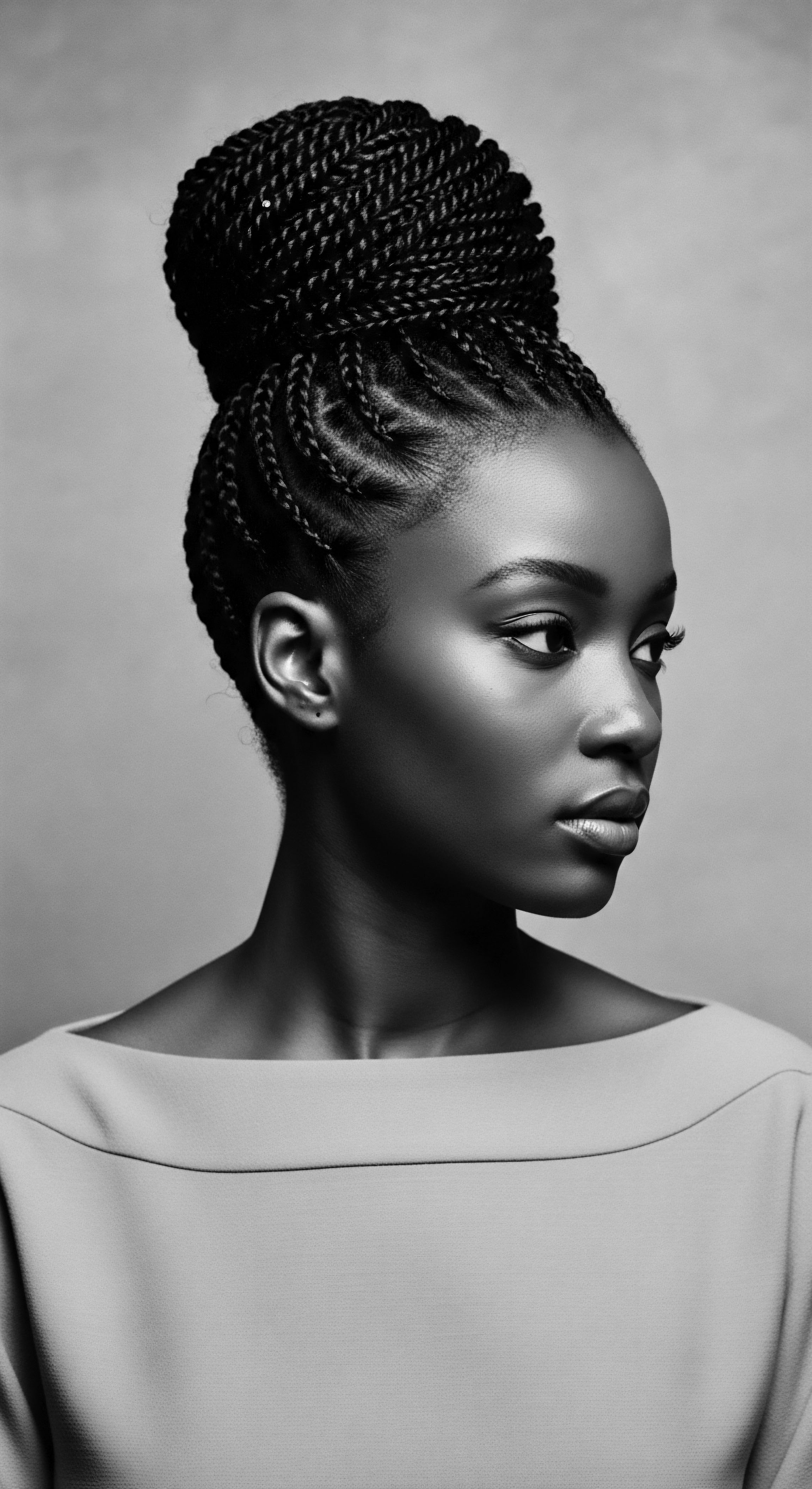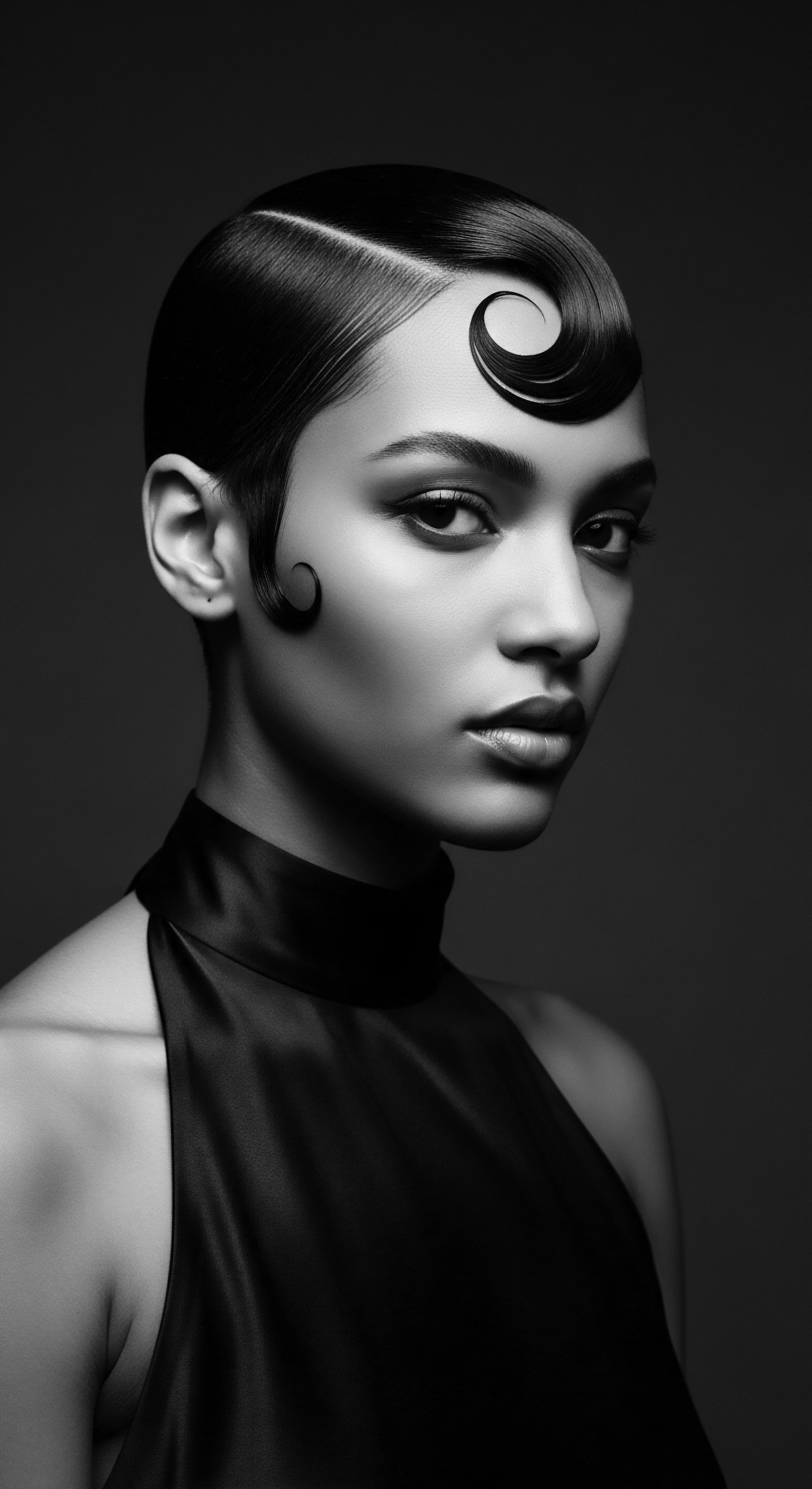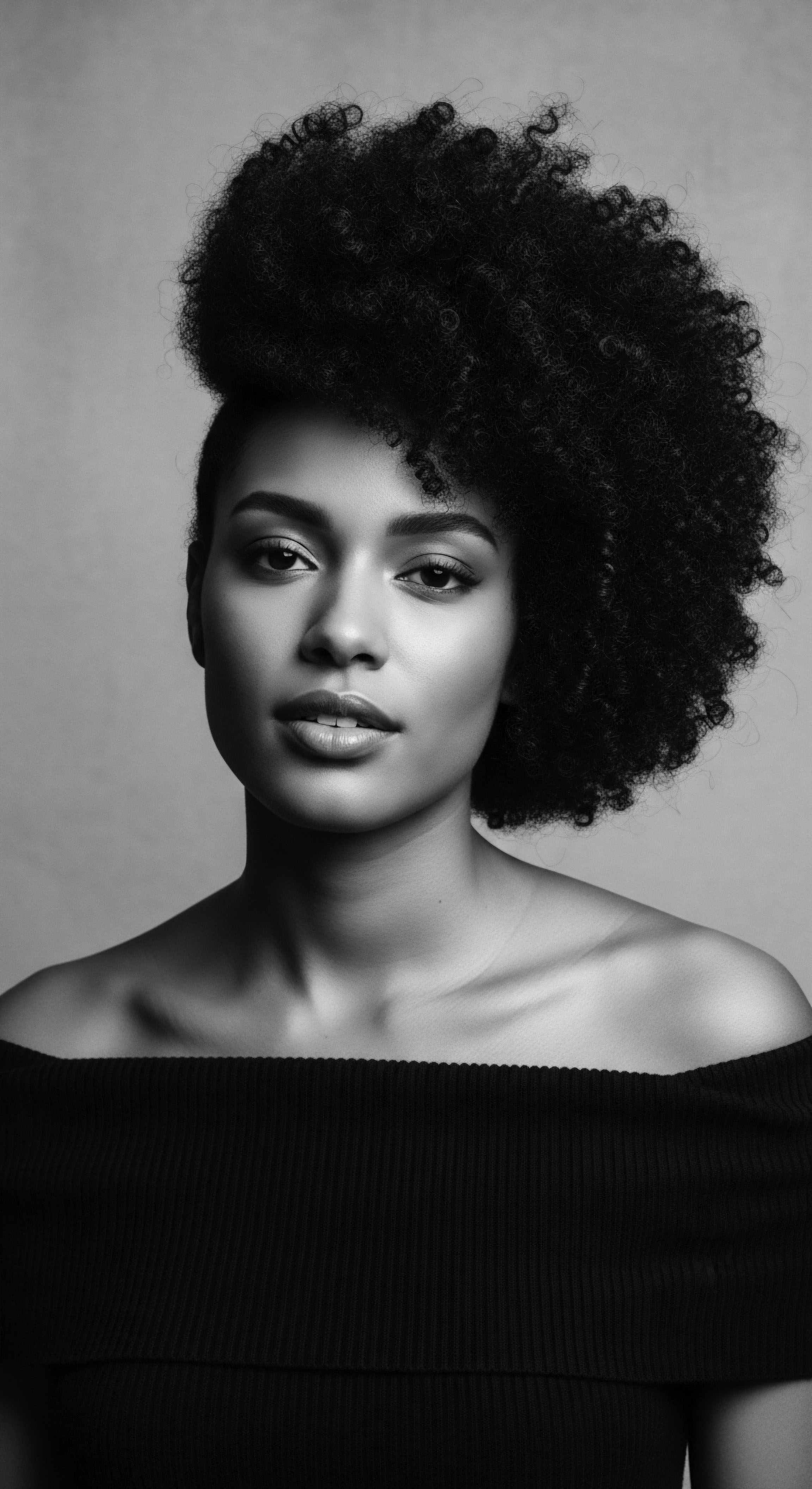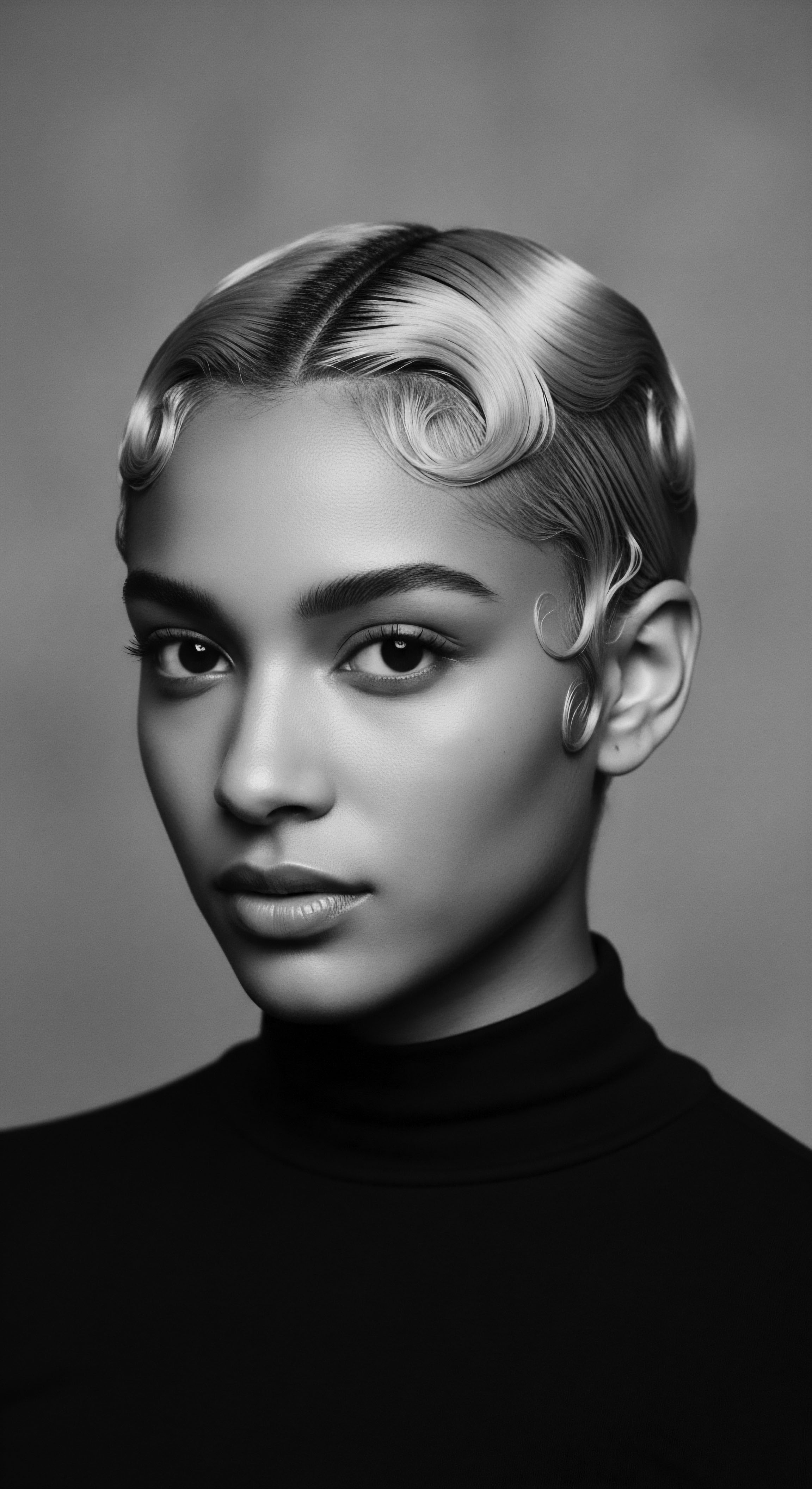
Roots
Consider for a moment the very fibers of our hair, particularly those strands that coil and curve, whispering tales of distant lands and enduring legacies. What deep wisdom held our ancestors, those who walked the earth long before bottles and labels, when it came to caring for these precious, often thirsty, helices? The journey into how ancient civilizations sustained the vibrancy of textured hair is not a mere academic exercise; it is a communion with ancestral knowledge, a recognition of ingenuity born from necessity and a profound respect for the inherent glory of our natural selves. Every strand, a living archive, holds within it the story of nourishment, protection, and identity passed down through millennia.

The Genesis of Care ❉ Early Civilizations and Hair’s Fabric
The earliest chapters of human civilization tell us that hair care was never a trivial pursuit. It stood central to well-being, appearance, and indeed, survival. Across the African continent, where textured hair types were and remain predominant, the relationship with hair was particularly significant.
Ancient communities observed their environment, recognizing the bounty of the land for sustenance, healing, and personal adornment. The harsh sun, arid winds, and dust-laden air of many ancient landscapes demanded a constant replenishment of moisture for skin and hair alike.
Early moisturization began, at its most elemental, with water itself. Beyond simple washing, water served as a primer, preparing the hair to receive and hold deeper nourishment. Coupled with readily available natural fats and oils, a rudimentary, yet highly effective, approach to hydration began to take shape. This ancestral understanding of moisture as a foundation laid the groundwork for sophisticated regimens that would unfold over centuries.
Ancient peoples turned to their environment, discerning natural gifts that kept textured hair supple amidst challenging climates.

Anatomy of Textured Hair and Ancestral Insight
To grasp ancient practices, one must first comprehend the very fiber of textured hair. Unlike straight hair, coily and kinky strands possess an elliptical or flat cross-section and grow in a helical pattern. This unique shape, while stunning, also creates more points along the strand where the cuticle can lift, leading to greater moisture loss and susceptibility to dryness.
The natural oils produced by the scalp, known as sebum, often struggle to travel down the spiraling length of textured hair as effectively as they do on straighter hair. This fundamental biological reality, though not articulated in scientific terms then, was deeply understood by ancient peoples through observation and lived experience.
Ancestral Wisdom acknowledged this tendency towards dryness. They sought to supplement the hair’s natural moisture, recognizing that a well-nourished strand was a resilient one. Their solutions were not accidental; they were the culmination of generations of trials, observations, and shared knowledge within communities. They understood that external applications were essential to compensate for the structural characteristics that made textured hair prone to dehydration.

What Did Ancient Peoples Know About Hair’s Thirst?
Without microscopes or chemical analyses, how did ancient civilizations discern the needs of textured hair? Their knowledge stemmed from direct interaction and empirical evidence. They observed that hair became brittle, dull, and prone to breakage when dry. Conversely, hair treated with certain substances appeared softer, shinier, and more manageable.
This keen observation led to the classification of ingredients based on their perceived effect. Substances that left hair feeling soft and pliable were valued for their moisturizing properties. Those that added sheen or made styling easier were also prized. This pragmatic approach created a foundational lexicon of hair care, even if unspoken, across various cultures.
Consider the Sahara. The peoples living in regions bordering this vast desert, such as those in ancient Nubia or parts of West Africa, faced intense sun and dry winds. Their very survival depended on a deep connection to their environment. The plants and animals that thrived there offered clues.
The rich, fatty seeds of the Shea Tree, for instance, indigenous to parts of West Africa, yielded a creamy butter known for its emollient properties. This butter became a staple for moisturizing skin and hair, a tradition maintained through generations, speaking to an ancient understanding of its efficacy.
- Oils ❉ Plant-derived lipids, like olive oil, castor oil, and moringa oil, provided a protective barrier against moisture loss.
- Butters ❉ Rich, solid fats such as shea butter and cocoa butter, offered deep conditioning and sealing properties.
- Herbal Infusions ❉ Water steeped with conditioning plants, used as rinses to add softness and improve hair texture.

Ritual
The care of textured hair in ancient societies was far more than a practical task; it was often a deeply embedded ritual, intertwined with community, identity, and spirituality. These practices, honed over centuries, represent a living heritage of holistic wellness. The application of moisture, whether through oils, butters, or herbal preparations, was a ceremony in itself, a moment of connection to self and lineage. It wasn’t merely about superficial appearance; it was about honoring the very essence of existence, reflected in the vibrant health of one’s hair.

Ceremonial Applications and Protective Practices
Across ancient civilizations, the method of applying moisturizing agents was as significant as the agents themselves. In Kemet (Ancient Egypt), for instance, elaborate hair care regimens were documented through hieroglyphs and archaeological finds. Ointments and balms, often infused with fragrant resins and herbs, were meticulously worked into hair.
These weren’t quick applications; they were slow, deliberate acts, likely performed with care, perhaps by family members or skilled attendants. The very act of applying these substances was an affirmation of status, beauty, and well-being.
Beyond daily applications, protective styling emerged as a critical element in maintaining moisture and preventing damage to textured hair. Braids, twists, and various forms of coiling were not simply aesthetic choices. They served a practical purpose ❉ gathering the hair, reducing exposure to environmental stressors, and minimizing tangling and breakage, all of which helped preserve moisture within the hair shaft. These styles, often adorned with beads, shells, or gold, also served as powerful markers of social standing, age, and spiritual connection.
Ancient hair care transcended practicality, becoming a deeply woven ritual that upheld identity and community spirit.

The Ingenuity of Ancient Formulations ❉ What Did They Use?
The natural pharmacy of the ancient world provided a diverse range of emollients and humectants for textured hair. Understanding these ingredients helps us comprehend the depth of their knowledge.
- Moringa Oil ❉ Prized in ancient Kemet, moringa oil (from the ben tree) was known for its stability and light texture. Its fatty acid profile helped seal in moisture without excessive greasiness, making it ideal for maintaining a healthy sheen on textured hair. This oil was frequently found in cosmetic vessels unearthed from tombs, attesting to its widespread use in personal care.
- Castor Oil ❉ Another staple in Kemet, castor oil, particularly the black castor oil variety, is rich in ricinoleic acid, which possesses conditioning properties. Texts like the Ebers Papyrus (circa 1550 BCE) describe various ointments and remedies, some of which are believed to have contained castor oil, suggesting its use in maintaining hair and scalp health (Nunn, 1996, p. 149-150). While not explicitly for “textured hair,” the general principles of moisturizing and nourishing the scalp and strands would apply universally, and given the population, it would have been widely used on a variety of hair types.
- Olive Oil ❉ Widely available in the Mediterranean region, olive oil was a common moisturizing agent in ancient Greece and Rome. Its rich, emollient properties helped to soften and condition hair, even if primarily applied to straighter hair types. Yet, its presence across interconnected trade routes means its use for various hair types, including those with more texture, cannot be dismissed.
- Shea Butter ❉ From West Africa, the fat extracted from the shea nut was a powerhouse for moisturizing. Its unique composition of fatty acids and unsaponifiable matter made it exceptionally effective at providing deep, lasting hydration and protecting hair from environmental damage. Its usage traditions are deeply rooted in ancestral practices for skin and hair.
| Source Region Kemet (Ancient Egypt) |
| Primary Ingredient Moringa Oil, Castor Oil |
| Method of Use Applied as balms and ointments, often mixed with aromatic resins. |
| Source Region West Africa |
| Primary Ingredient Shea Butter |
| Method of Use Melted and massaged into hair and scalp; also used for braiding and styling. |
| Source Region Mediterranean |
| Primary Ingredient Olive Oil |
| Method of Use Used as a conditioner, sometimes infused with herbs or flowers. |
| Source Region North Africa (Berber traditions) |
| Primary Ingredient Argan Oil |
| Method of Use Applied to nourish hair, protect from sun, and add luster. |
| Source Region These ancestral preparations highlight a resourcefulness that sustained textured hair for ages. |

How Did Specific Cultural Practices Adapt to Climate?
Climate played an undeniable part in shaping hair care rituals. In hot, arid regions, the emphasis was on protecting hair from excessive sun and wind, which desiccate strands rapidly. This led to practices like generously oiling hair and then covering it with wraps or elaborate headwear.
In humid climates, while moisture was abundant, the challenge shifted to managing frizz and maintaining definition, which might have led to different styling and cleansing frequencies. The ingenuity of ancient civilizations lay in their practical adaptations.
The Himba People of Namibia, whose practices hold deep echoes of ancestral ways, provide a vivid case study. Their iconic “otjize” paste, a mixture of Ochre, Butterfat, and Sometimes Aromatic Resin, is applied daily to their hair and skin. This practice is not solely for aesthetic appeal; it serves as a powerful moisturizer, sunscreen, and insect repellent.
The rich butterfat deeply conditions their textured hair, protecting it from the harsh desert sun and dry winds, allowing their intricate dreadlocked styles to maintain integrity and health over extended periods. This continuous application speaks to a profound understanding of sustained moisture for hair in extreme environments, a practice that has been handed down through generations and remains a powerful symbol of their cultural identity.

Relay
The ancestral wisdom concerning textured hair moisture, so vital in ancient rituals, did not vanish with the passage of time. It has been relayed through generations, often silently, within families and communities, forming an unbreakable chain of heritage. This continuous stream of knowledge, passed from elder to youth, represents a profound living archive, allowing us to connect the efficacy of ancient practices with modern scientific understanding. The journey of these moisturizing methods from elemental beginnings to contemporary appreciation underscores the enduring resilience of textured hair heritage.

The Living Heritage of Ingredients and Techniques
The very oils and butters revered in antiquity continue to be staples for textured hair care today. The resurgence of interest in ingredients like shea butter, castor oil, and moringa oil speaks to a collective awakening, a recognition that the “old ways” often hold profound validity. This is not coincidence; it points to the scientific efficacy that ancient peoples intuited. Shea butter, for instance, is now known to be rich in vitamins A and E, and beneficial fatty acids, all of which contribute to its powerful emollient and anti-inflammatory properties, making it exceptional for nourishing thirsty textured hair.
The practice of oiling hair and scalp, central to ancient moisturization, finds its modern counterpart in methods like the “LOC” (Liquid, Oil, Cream) or “LCO” (Liquid, Cream, Oil) methods. These contemporary regimens are essentially formalized systems for layering moisture and sealants, directly mirroring the ancestral intuition that textured hair benefits from a multi-step approach to hydration. The underlying principle remains identical ❉ introduce water-based moisture, then lock it in with heavier emollients.
- Protective Styles ❉ Ancient braiding and twisting techniques persist, celebrated not only for their beauty but also for their ability to maintain moisture and minimize breakage.
- Scalp Health ❉ Massaging oils into the scalp, a common ancient practice, continues to be valued for stimulating blood circulation and promoting healthy hair growth by keeping the foundation moisturized.
- Natural Rinses ❉ Herbal infusions and acidic rinses, like those using diluted vinegar or citrus (ancestral parallels to modern pH-balancing rinses), help to smooth the cuticle, aiding in moisture retention and shine.
The enduring use of ancient ingredients and techniques in modern textured hair care speaks to a deep, unbroken line of heritage.

Connecting Ancient Wisdom to Modern Hair Science
How do the methods of ancient civilizations align with our contemporary understanding of hair science? The connection is striking. Ancient peoples, through observation, arrived at solutions that modern chemistry now validates.
For instance, the use of fatty oils and butters by our ancestors directly addresses the challenge of water loss from textured hair. These lipids create an occlusive barrier on the hair shaft, slowing down the rate at which water evaporates. This “sealing” action is a fundamental principle of modern moisturizing. The application of these rich substances helped to maintain the elasticity of the hair and prevent the cuticle from becoming too dry and brittle, thereby reducing breakage.
Moreover, many traditional ingredients possessed natural humectant properties. Honey, used in various ancient cultures for its medicinal and cosmetic benefits, draws moisture from the air into the hair. This dual action – humectant and emollient – meant that ancient moisturizing solutions were often comprehensive, addressing multiple aspects of hair hydration simultaneously. The careful layering of these elements, whether consciously or intuitively, created a powerful system of care.

What Does Archeological Data Tell Us About Ancestral Hair Care?
Archaeological findings offer tangible proof of ancient hair care practices. Excavations in Kemet have unearthed cosmetic palettes, combs made from bone and wood, and even residues of balms and oils found in jars within tombs. These artifacts provide direct evidence of the materials and tools used.
Studies of hair samples from mummified remains sometimes reveal traces of these ancient applications, confirming their use. For example, analysis of ancient Egyptian hair has shown evidence of animal fats and plant oils used to condition and style, preserving the hair’s structure even after millennia.
In a study on hair samples from ancient Egyptian mummies, researchers identified the presence of Fatty Acids consistent with animal fats and plant oils (Lapp, 2011, p. 119-122). While specific hair types were not the focus of this particular chemical analysis, the findings demonstrate a consistent use of lipid-based substances for hair preservation and likely conditioning.
This objective data supports the idea that ancient Egyptians systematically applied moisturizing agents to hair, a practice that would have been beneficial for all hair types, including those with more texture. The scientific detection of these substances provides a tangible link to the ancestral practices that kept hair in remarkable condition.
The meticulous preservation of hair in burial practices also indicates the high regard for hair’s symbolic and aesthetic importance. This level of intentional care suggests not just a casual approach, but a sophisticated understanding of how to maintain hair’s integrity, even in death, reflecting a deep respect for the physical body as an extension of identity and spirit.

Reflection
The exploration of how ancient civilizations moisturized textured hair is a profound meditation on continuity. It shows us that the desire to nurture and honor our strands is not a modern trend but an ancestral echo, a practice deeply woven into the fabric of human existence. From the sun-baked landscapes of Africa to the verdant riverbanks of Mesopotamia, our forebears, with incredible insight and resourcefulness, divined methods of hydration that remain remarkably relevant today. Their legacy is a testament to the wisdom that resides in looking to the earth for solutions, understanding its rhythm, and trusting the inherent power of natural elements.
The history of textured hair care is a narrative of resilience, innovation, and unwavering spirit. It is a story told not just through texts and artifacts, but through the very hair we wear, a living testament to those who came before us. Every time we reach for a natural oil or butter, every time we choose a protective style that safeguards our coils, we are participating in a conversation across millennia.
We are honoring the ingenuity of our ancestors, acknowledging their profound connection to the body and the earth, and affirming that the soul of a strand carries the whispers of generations. Our hair, indeed, is an unbound helix, carrying forward a vibrant heritage.

References
- Lapp, G. (2011). The Papyrus Ebers ❉ The Oldest Medical Book in the World. (Abridged English translation). Edition Prana.
- Nunn, J. F. (1996). Ancient Egyptian Medicine. British Museum Press.
- Obenga, T. (2004). African Philosophy of the Pharaonic Period ❉ From the Origins to the Greco-Roman Period. Per Ankh.
- Walker, A. (2004). Hair Story ❉ Untangling the Roots of Black Hair in America. St. Martin’s Press.
- Mbiti, J. S. (1969). African Religions and Philosophy. Heinemann.
- Ehret, C. (2002). The Civilizations of Africa ❉ A History to 1800. University Press of Virginia.
- Wilkinson, R. H. (1994). Reading Egyptian Art ❉ A Hieroglyphic Guide to Ancient Egyptian Painting and Sculpture. Thames and Hudson.
- Sherman, C. R. (2014). African Hair ❉ Its History, Culture, and Care. CreateSpace Independent Publishing Platform.
- Pringle, S. (2007). African Hair ❉ A History of Texture and Beauty. University of California Press.
